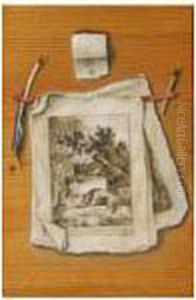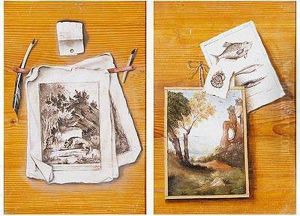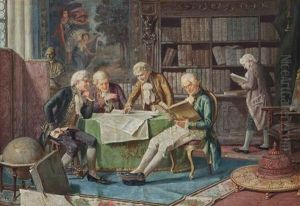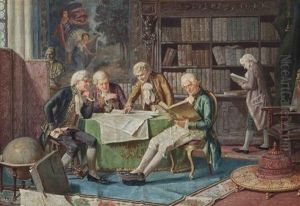Francesco Moretti Paintings
Francesco Moretti was an Italian painter who made a significant contribution to the art world during the 19th century. Born on June 4, 1833, in La Spezia, Italy, Moretti was known for his historical paintings, portraits, and frescoes. He was particularly celebrated for his ability to capture the essence of the Italian Renaissance in his works.
Moretti's education in the arts began at a young age, and he was profoundly influenced by the rich artistic heritage of Italy. He studied at the Academy of Fine Arts in Florence, where he honed his skills and developed a style that combined elements of Neoclassicism and Romanticism, which were prominent at the time.
Throughout his career, Francesco Moretti received numerous commissions for frescoes in public and religious buildings, which helped to establish his reputation as a master of mural painting. His work was characterized by a meticulous attention to detail and a strong sense of composition, often imbued with a sense of historical grandeur and drama.
Despite the popularity of his historical and religious works, Moretti also gained recognition for his portrait paintings, which captured the likenesses and personalities of his subjects with sensitivity and insight. His portraits are notable for their refined elegance and the psychological depth he brought to his depictions of individuals.
Francesco Moretti's contributions to Italian art were appreciated during his lifetime, and he was a respected figure among his contemporaries. His works continue to be studied and admired for their technical skill and their embodiment of the cultural and historical spirit of 19th-century Italy.
Moretti's legacy is also tied to his role as a teacher. He shared his knowledge and passion for art with a new generation of painters, many of whom would go on to have their own successful careers. Through his teachings, he helped to perpetuate the techniques and traditions of Italian painting well into the future.
Francesco Moretti passed away on January 26, 1917, in Perugia, Italy. Today, his works can be found in various art collections, museums, and churches throughout Italy, serving as a testament to his enduring influence on the world of art.



